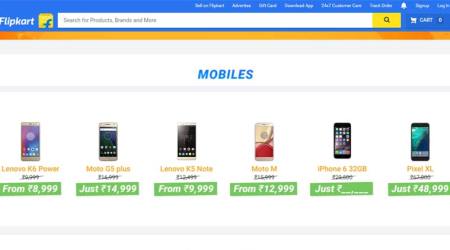 Lenovo K8 Note has been launched in India, and here’s our first impressions.
Lenovo K8 Note has been launched in India, and here’s our first impressions.
It’s been since long time Lenovo launched a new smartphone under its own brand. The wait is finally and Lenovo K8 Note is here. The phone sports mid-end specifications, dual cameras, and a big battery. Thee are two variants of the phone: 3GB RAM and 32GB storage at Rs 12,999 while the 4GB RAM and 64 GB storage version will cost Rs 13,999. Lenovo K8 Note has become the company’s first smartphone to embrace stock Android, even though Motorola-branded phones have been shipping with the stock Android for a while now.
The question is whether the Lenovo K8 Note is a good option. But the bigger question is whether Lenovo K8 Note can convince Xiaomi Redmi Note 4 users to switch over. I got the Lenovo K8 Note review unit ahead of the launch event, and here’s an early look at the smartphone.
Lenovo K8 Note Design, display
Lenovo K8 Note is slim and light to handle, although the phone has a large 5.5-inch screen. But this is comfortable to hold and use with one hand. Lenovo K8 Note sports a metal unibody design and the construction is top-notch. It isn’t entirely made of metal, though – the top and bottom edges are plastic, which seamlessly blend with the rest of the design. There’s a water-repellent nano-coating, a feature taken from Motorola-branded smartphones.
 The K8 Note is slim and light to handle, and although the phone has a large 5.5-inch screen.
The K8 Note is slim and light to handle, and although the phone has a large 5.5-inch screen.
The power and volume controls are on the right-hand side, while the left side houses the dual-SIM tray and a microSD card slot. Plus, there’s a dedicated hardware button to control your music as well. The 3.5 mm headphone jack is on top, while there are two speaker grilles on either side of a micro-USB port on the bottom. Meanwhile, the fingerprint scanner can be found on the back side, just below the dual-camera setup. Lenovo K8 Note’s 5.5-inch FHD (1920 x 1080) display screen is protected with Corning Gorilla Glass. Its viewing angles are fine and brightness levels are ample too.
Lenovo K8 Note Processor, battery
In terms of power, you’re paying for a mid-end hardware. Instead of the traditional chip from Qualcomm found on many Lenovo smartphones, the K8 Note sports a ten-core MediaTek Helio-X23 processor clocked at 2.3Ghz, along with 3GB or 4GB RAM coupled with 32GB or 64GB onboard storage and microSD card support. Our review unit came with 4GB RAM and 64GB internal memory, so we’re expecting some pretty serious performance.
 Instead of the traditional chip from Qualcomm found on many Lenovo smartphones, the K8 Note sports a deca-core MediaTek Helio-X20 processor.
Instead of the traditional chip from Qualcomm found on many Lenovo smartphones, the K8 Note sports a deca-core MediaTek Helio-X20 processor.
As I’ve only spent a few hours with the Lenovo K8 Note so it would be hard to critically examine its overall performance. The same can be said for the 4000mAh battery, but it should last at least a day on a single charge. One can charge the phone’s battery via the micro-USB cable, there’s no USB-C port.
Lenovo K8 Note Software, UI
Lenovo has finally decided to embrace stock Android. That’s a huge development. So from now on, you won’t see a Lenovo smartphone with the company’s Vibe UI skin over top of Google’s Android OS. Instead, every smartphone from the company in future will come with stock Android. To begin with, Lenovo K8 Note ships with pure Android 7.1.1 Nougat out of the box. The aim is to make Lenovo smartphones at par with Motorola smartphones, which have had stock Android so far. Google Assistant and multi-window mode will be available on the Lenovo K8 Note as well.
Lenovo K8 Note Dual cameras
In the case of the Lenovo K8 Note, the phone’s main camera uses a 13MP sensor while the secondary camera sports a 5MP sensor. When used in tandem, a dual-camera setup gives you the ability to change the depth of field, so you can blur the background just like you would on a DSLR. The front face of the phone features a 13MP shooter with an LED flash.
I was pleased by the test shots I took. There’s no need to adjust settings, the camera can take some nice shots. The camera software has been slightly tweaked, as this phone comes with a dual-camera setup. There are a multitude of control options available right on the screen to fine tune the image.
 Sample images from Lenovo K8 Note. Image resized for web.
Sample images from Lenovo K8 Note. Image resized for web.
 Sample images from Lenovo K8 Note. Image resized for web.
Sample images from Lenovo K8 Note. Image resized for web.
Lenovo K8 Final Thoughts
Has Lenovo done enough with the K8 Note? That’s the big question. Lenovo K8 Note might not the best looking smartphone I’ve ever seen, but it appears to be a solid option. Its dual cameras, and pure Android software are all plus points. The pricing means this will challenge the Redmi Note 4, which is one of the most popular smartphones in the category.

